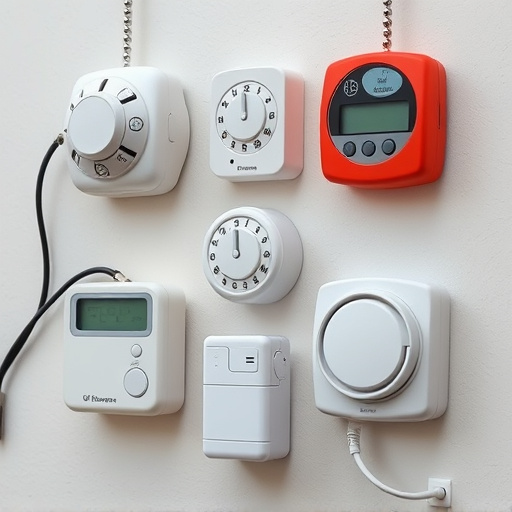College campuses, with their diverse and bustling environments, require robust personal safety measures. In response to rising violence, "Personal Safety Devices for College" have emerged as innovative solutions. Wearable technology, from stylish smartwatches to compact trackers, offers real-time alerts, location sharing, GPS tracking, automatic fall detection, and one-touch emergency buttons. These devices empower students, enhance security, and enable them to navigate unfamiliar campus environments safely, combining style with protection for a secure academic journey.
In today’s digital era, ensuring personal safety on college campuses is paramount. With an increasing number of incidents, there’s a growing need for innovative solutions like wearable security devices with mobile alerts. These gadgets offer students peace of mind by allowing them to quickly call for help or notify authorities in case of emergencies. This article explores the importance of personal safety devices for college students, delves into various types available, highlights key benefits and features, and provides insights on effective implementation and usage.
- Understanding the Need for Personal Safety Devices on College Campuses
- Types of Wearable Security Devices with Mobile Alerts
- Benefits and Features to Look For in College Students
- Implementing and Using Wearable Security Devices Effectively
Understanding the Need for Personal Safety Devices on College Campuses
College campuses, known for their vibrant and bustling environments, often present unique challenges when it comes to personal safety. With students from diverse backgrounds gathering from all corners of the globe, ensuring their well-being and security is a top priority. The rise in campus violence and personal security incidents has prompted institutions to reevaluate their strategies and adopt more proactive measures. This includes implementing Personal Safety Devices for College students, offering them a sense of security and empowerment.
These devices, often in the form of wearable technology with mobile alerts, provide an innovative solution. Students can discreetly carry these devices, allowing them to quickly alert authorities or trusted contacts in case of emergencies. By integrating such technology into campus life, colleges can foster a safer environment, encouraging students to feel confident and secure while pursuing their academic pursuits.
Types of Wearable Security Devices with Mobile Alerts
In today’s digital era, personal safety devices for college students have evolved beyond traditional methods. Wearable security devices equipped with mobile alerts are gaining popularity as a game-changer in ensuring student safety. These innovative gadgets come in various forms, each offering unique features to cater to different needs. From smart watches to compact personal trackers, these devices provide real-time communication and location sharing capabilities, allowing users to reach their loved ones instantly in case of emergencies.
For instance, some devices incorporate GPS tracking, automatic fall detection, and one-touch emergency buttons, making them ideal for navigating unfamiliar campuses or late-night study sessions. Others focus on discreet personal safety, with subtle designs that blend into everyday wear while still providing crucial mobile alerts. These wearable security solutions empower students to stay connected, offering peace of mind and an additional layer of protection during their college years.
Benefits and Features to Look For in College Students
College students often find themselves navigating unfamiliar environments, whether it’s living in a new dorm or exploring campus at night. Investing in personal safety devices for college can provide much-needed peace of mind. Wearable security devices equipped with mobile alerts offer a range of benefits specifically tailored to students’ needs.
When choosing a device, look for features like real-time location tracking, instant alert systems that notify pre-selected contacts in case of emergencies, and the ability to quickly call for help. Some advanced models even incorporate AI to detect unusual activities or movements, automatically triggering alerts. These personal safety devices for college students are not just tools; they empower individuals to stay secure while embracing the independence and exploration that comes with higher education.
Implementing and Using Wearable Security Devices Effectively
Implementing and using wearable security devices effectively requires a strategic approach, especially for personal safety devices designed for college students. These devices are more than just trendy accessories; they offer an additional layer of protection in an increasingly digital world. Students should begin by understanding their specific needs on campus, whether it’s attending classes, studying in libraries, or walking home late at night. Once identified, they can select a wearable device equipped with features like GPS tracking, automatic fall detection, and mobile alerts for distress signals.
Proper usage involves keeping the device charged, ensuring it’s clearly visible (like a smartwatch or fitness tracker), and pairing it with a compatible smartphone app. Students must also familiarize themselves with the device’s alert system, learning how to send out silent alarms or location-sharing requests in case of emergencies. Regular updates to the app and operating system are crucial for maintaining optimal performance and security patches. By adopting these practices, college students can maximize the benefits of wearable security devices, enhancing their personal safety while enjoying the freedom that comes with campus life.
Wearable security devices with mobile alerts are a game-changer in enhancing personal safety for college students. By empowering individuals with real-time communication and location sharing, these innovative tools offer a sense of security and peace of mind while navigating campus life. As technology advances, integrating such devices into student life not only addresses the growing concerns about personal safety on college campuses but also fosters a more connected and supportive learning environment. Embracing Personal Safety Devices for College students can lead to a significant reduction in potential risks and contribute to a safer overall experience.
